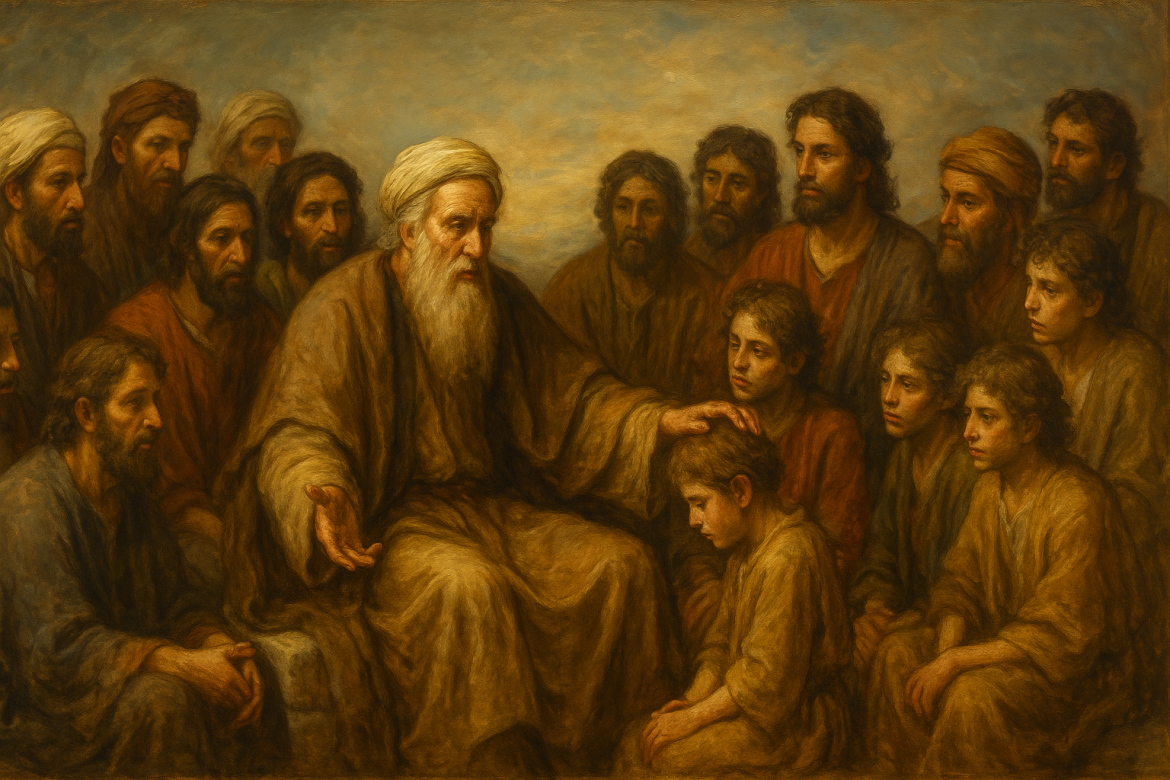The Tribes of Israel: Their History, Scattering, and Relevance to the Time of Jesus
Introduction
The story of the tribes of Israel may feel far removed from modern life, especially for those of us who don’t live in tribal societies. Yet, this ancient history shapes much of the biblical narrative and deeply influences the world in which Jesus lived. By tracing the journey of these tribes—from their formation in the time of Jacob, through exile and scattering, to their presence during Jesus’ ministry—we gain a clearer understanding of the tensions, divisions, and opportunities for reconciliation that Jesus addressed.
The Origins: Jacob Becomes Israel
The journey begins with Jacob, the son of Isaac and grandson of Abraham. God renamed Jacob “Israel,” and from his twelve sons came the tribes that bore his name: Reuben, Simeon, Levi, Judah, Dan, Naphtali, Gad, Asher, Issachar, Zebulun, Joseph, and Benjamin.
Joseph’s tribe was unique. Instead of receiving his own territory, his sons—Ephraim and Manasseh—were each granted land, maintaining the total number of land-holding tribes at twelve. Under Joshua’s leadership, the Promised Land was divided among them, spanning regions that today include parts of Israel, Jordan, Lebanon, and Syria.
Geography and Division
The northern tribes—such as Dan, Naphtali, Zebulun, Asher, and the large territory of Manasseh—were located closer to the lands of Assyria and other northern powers. The southern area, with Judah and Benjamin, included Jerusalem at its heart.
After King Solomon’s death around 930 BC, political tensions erupted. His sons, Rehoboam and Jeroboam, each claimed kingship, splitting the kingdom into two:
- Israel in the north
- Judah in the south
This division weakened the people, leaving them vulnerable to foreign powers.
Exile and the “Lost Tribes”
In 722 BC, Assyria conquered the northern kingdom, exiling thousands and killing many. Foreign settlers brought in by the Assyrians intermarried with the remaining Israelites, blending cultures and introducing pagan practices. This is where the concept of the “Ten Lost Tribes” emerges—groups who vanished from the biblical narrative, leaving behind mysteries and legends.
Some traditions claim these tribes migrated far and wide:
- Ethiopia: The Beta Israel community traces its heritage to the tribe of Dan.
- India: The B’nei Manasseh claim descent from Manasseh.
- Nigeria: The Igbo people claim multiple northern tribal ancestries.
- South Africa: The Lemba carry Jewish oral traditions and genetic markers.
- Persia and Kashmir: Ancient Jewish communities persist to this day.
Meanwhile, the south—Judah—fell to Babylon in 586 BC, but many exiles later returned to rebuild the temple and reestablish the priesthood. This return solidified a strong tribal identity for Judah, Benjamin, and Levi.
Samaritans and Deep Divisions
Not all northerners were exiled. Some remained in the land, eventually becoming the Samaritans. They continued to worship God but built their own temple on Mount Gerizim instead of Mount Zion in Jerusalem.
By the time of Jesus, Jews in the south viewed Samaritans as impure and unfaithful. The divide wasn’t just political—it was personal, spiritual, and generational.
Jesus’ Ministry in a Divided Land
When Jesus arrived on the scene, these ancient fractures still shaped relationships. The Jews of His day were primarily from Judah, Benjamin, and Levi. They mistrusted the northern tribes, especially Samaritans.
Yet, Jesus repeatedly crossed these boundaries:
- Healing the Ten Lepers—only the Samaritan returned to thank Him.
- The Parable of the Good Samaritan—making a Samaritan the hero over a priest.
- The Woman at the Well—offering her living water, declaring that true worship was about the heart, not a mountain.
Jesus didn’t avoid Samaria; He walked through it, breaking centuries-old barriers. His message was clear—God’s kingdom was not for one tribe, but for all humanity.
The Relevance for Today
The story of the tribes of Israel reminds us that divisions—whether ethnic, political, or spiritual—can persist for centuries. Like the northern and southern kingdoms, people and communities today often drift apart over time, sometimes due to just small differences that grow larger with each generation.
Jesus’ example challenges us to break through those divisions. Just as He reached across borders, He calls us to reconcile, to heal, and to build unity. His mission wasn’t to restore one tribe—it was to create one family under God, no matter how scattered or estranged.
Takeaways for Modern Life
- History shapes relationships—Understanding where divisions come from helps us approach reconciliation with compassion.
- Small separations grow over time—Even slight differences can cause major divides if left unaddressed.
- Reconciliation takes intentional steps—Jesus modeled going directly to those we might avoid.
- Unity is God’s goal—It’s not about erasing identity, but about bringing diverse people together in love.
Conclusion
The tribes of Israel were more than ancient names—they were living communities that shaped the spiritual and political world of the Bible. Their scattering and survival tell a story of resilience, loss, and hope. In Jesus, those ancient divisions began to heal, and the invitation remains for us today: to cross barriers, to forgive, and to see all people as part of one family. Reconciliation doesn’t happen all at once. It begins with small steps.

